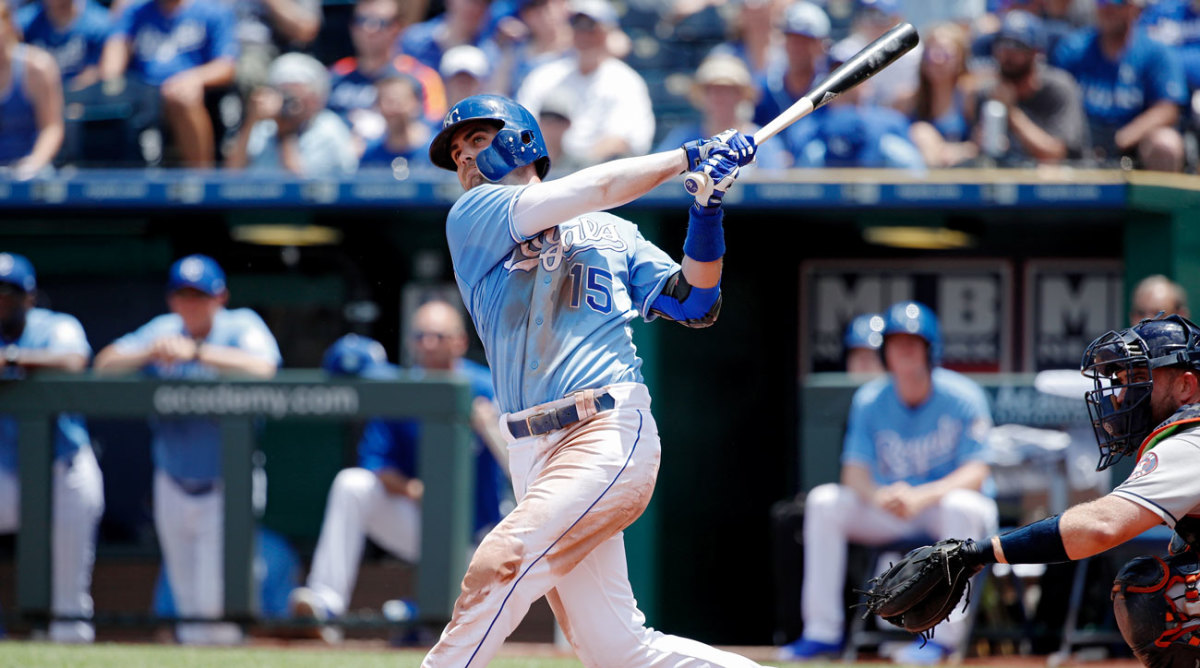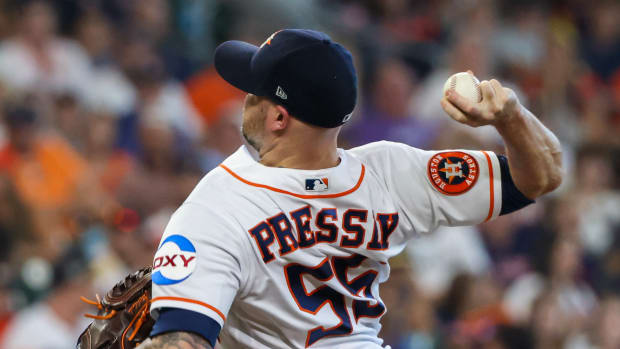Whit Merrifield's Contract Extension Is Proof That Players Are Looking for Any Financial Security

In some respects, it’s a miracle that Whit Merrifield is making major league money in the first place. This is a man who was a ninth-round draft pick, spent eight seasons in the minors, and didn’t make his MLB debut until he was 27 years old. Guys with his profile usually don’t turn into productive regulars, much less stars; they bounce around for a couple of years as backups and wash out a long way away from those life-changing millions.
Yet here’s Merrifield, who on Monday took the latest step in his improbable career, as he’s reportedly close to signing a four-year contract extension with the Royals. It’s a moment of triumph and joy for a player whose career is a borderline anomaly. Yet in one crucial respect, his new deal represents a distressingly common problem that plenty of MLB players face.
For as good as Merrifield has been—and over the last two years, he’s been one of baseball’s best second basemen—his contract will pay out a mere $16.25 million over the next four seasons. (There’s also a club option for $10.5 million in 2023, but that’s quite off in the distance.) It’s a pittance for one of the game’s more productive players. Consider that, since emerging as a regular for the Royals in 2017, Merrifield:
- Is tied for fourth in the league in hits (361) and led the majors in that category with 192 in 2018;
- Is fourth in stolen bases (79), including a league-high 45 last season;
- Has produced more bWAR (9.4) than, among others, Manny Machado, Cody Bellinger, Kris Bryant, Carlos Correa, J.T. Realmuto, and Matt Carpenter, and was worth more last year than Paul Goldschmidt, Jose Altuve, and Justin Turner;
- Has posted the fourth-highest OPS+ (114) of all second basemen with 1,000 or more plate appearances and 75% or more of their playing time spent at the position.
On top of that, Merrifield grades out positively as a defender at second base while capable of playing centerfield, rightfield and first base in a pinch. He’s also ranked in the top 50 of the league in Statcast’s Sprint Speed in all three years of his career. Any way you want to look at him, he’s been an elite player.
So why is Merrifield only going to make as much over the next four years as Wei-Yin Chen will in 2019 alone? For all his skill and numbers, Merrifield has no leverage thanks to baseball’s economic system, which suppresses the wages of its youngest players by locking them into preset salary ranges. With only two-plus years of MLB service time to his name, Merrifield was still a year shy of reaching arbitration—the first opportunity many players get to add some zeroes to their paychecks—and a full four seasons away from free agency, the promised land of big contracts. Had he turned down this extension, he would’ve played in 2019 for somewhere a little north of the $569,000 he made last year—peanuts for the kind of production he provides.
VERDUCCI: How Baseball Is Becoming a Gig Economy
This extension was Merrifield’s first chance to secure the kind of money he was still years away from making. And because it took him so long to reach the majors, his age was another factor in saying yes to what appears on the surface to be a paltry offer. Having turned 30 last week, he wouldn’t reach free agency until age 34, which isn’t exactly when you want to be putting your services on the open market. There’s also the risk that, given that he’s now on the wrong side of 30, Merrifield’s skills will begin to decline just as he enters what should be the most lucrative stages of his career—a particular fear given his speed-and-contact–predicated game. Rather than gamble that he can stay healthy and productive enough through the next three years to make more money, Merrifield locked in his millions now. Had he kept up this level of play, he likely could have made more through arbitration. But that’s a risk he seemingly wasn’t willing to take.
It’s hard to blame Merrifield for making the choice to secure his future even if it’s for less than he’s worth. But the fact that those were his options—take this below-market contract, or go year-to-year and hope that everything works out—is a damning indictment of MLB’s economic system. For the best years of their lives, players are paid a fraction of their value, with owners reaping all the profits. And while this arrangement in previous years at least saw the players eventually collect what they deserved in free agency, the owners are no longer upholding their end of that bargain, as the last two winters have shown. If teams aren’t going to spend, then the majority of the players aren’t going to view free agency as the ultimate prize, but as a terrifying unknown. Better to get that money now, then, even if it’s not as much as you think you should get.
As noted, given his age, Merrifield is a unique case with regards to his extension. But it’s not hard to imagine more and more players, as they look over the frozen free-agent landscape and see players forced to sign for millions of dollars less than hoped, signing whatever long-term deal they can to avoid the same fate. And barring changes to the current service time and arbitration rules, it’s a situation with no easy solution for those players. It’s yet another sign that baseball’s two decades of labor peace are headed for a rocky finish when the current collective bargaining agreement expires.



































